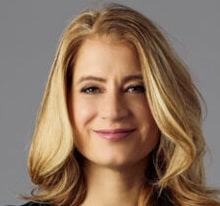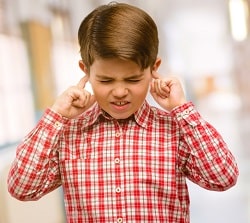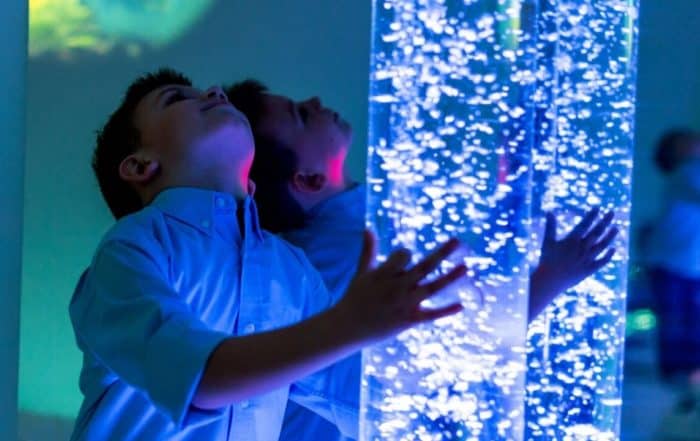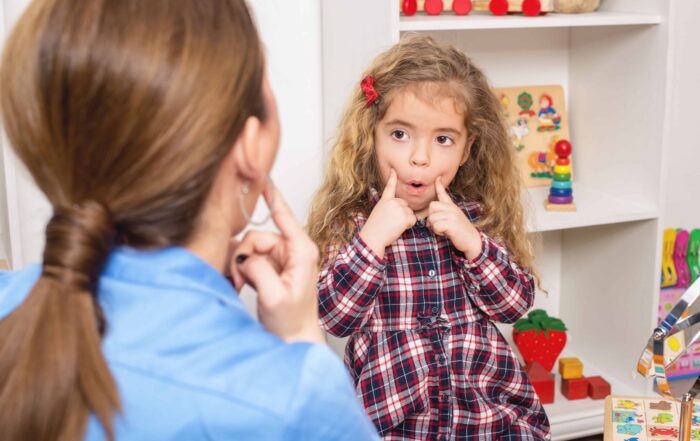Moira Peña, BScOT, MOT, OT Reg (Ont.), discusses sensory processing strategies for home. She describes how atypical sensory processing affects lived experiences of individuals with autism and outlines three sensory profiles. Peña dives into the sensory diet approach noting short- and long-term goals and the importance of the “power senses.” She provides examples of strategic sensory schedules and environmental adaptations and emphasizes the importance of co-regulating and leisure activities. Peña celebrates individual differences in autism and suggests that productive failures are part of the process. She provides more resources and tools before opening the question-and-answer session.
Ms. Peña offers a presentation on this topic in Spanish HERE
For more information on this topic:
- Watch Part 1: Brain & Sensory Processing Differences Across the Lifespan, recorded Wednesday, March 9, 2022
- Watch the live Q&A session, recorded May 4, 2022
- Access the handouts from this presentation HERE
- Take the knowledge quiz HERE
- Learn more about our speaker, Moira Peña, BScOT, MOT, OT Reg (Ont.) HERE
In this webinar:
2:20 – Sensory processing
4:14 – Sensory systems and DSM-IV definitions
9:40 – Sensory over-responders (SOR)
14:30 – Analogy: sensation accumulation volcano
16:35 – Sensory under-responsive (SUR)
18:40 – The Reason I Jump, Naoki Higashida
20:40 – Sensory seekers (SS)
21:25 – The power senses
27:00 – Sensory Diet Approach
28:00 – Sensory diet goals
30:30 – Components of a sensory diet approach
33:54 – Becoming a sensory detective
36:00 – Vestibular system ideas
40:10 – Proprioceptive system ideas
42:00 – Heavy work activities
45:53 – Tactile system ideas
46:47 – Deep touch pressure input
48:26 – Environmental adaptations
49:35 – Sensory kits and rooms
51:27 – Interaction style and co-regulation
52:40 – Recreation and leisure activities
54:50 – Summary
57:30 – Question & answer session
Summary:
Sensory processing, or “how we interact with the world around us,” is integral to daily function and quality of life (2:20). The presenter describes it as an unconscious process by which we:
- Take in sensory messages (or inputs) from our bodies and surroundings
- Interpret those messages
- Organize a purposeful response
Sensory processing difficulties are significantly more prevalent in individuals with autism than in their neurotypical peers. Up to 96% of children and youth with autism and 94% of autistic adults experience sensory processing so differently that daily functions can be significantly impacted (5:15). Although atypical sensory processing can be complex, Peña emphasizes that individuals with autism have access to an entire sensory world that neurotypical individuals do not. She states such differences are often a source of unique gifts and quality of life (7:30).
Peña outlines three sensory profiles: sensory over-responders (SOR) (9:40), sensory under-responders (SUR) (16:35), sensory seekers (SS) (20:40), and states that understanding these profiles can help us understand why behaviors occur and what supports may work best (8:24). She notes common character traits, reactions to stimuli, and what each profile requires to thrive in sensory balance. The presenter uses the analogy of a volcano to explain how the accumulation of aversive sensations experienced by individuals with SOR can lead to meltdowns (14:30).
Because individuals can be SOR in one sensory system and SUR in another, it is imperative to help individuals balance SOR, SUR, and SS and achieve sensory health. The sensory diet approach works with what you have to incorporate practical sensory tools into everyday life (27:00). Peña outlines sensory diet goals (28:00) and emphasizes that effective sensory diets are personalized and require “active and collaborative problem solving” (32:30).
The speaker describes the four components of a sensory diet approach (30:30):
- A schedule of sensory inputs (formal or embedded into daily routines)
To create a sensory diet, we must look at behavior without judgment and become a “sensory detective.” The speaker presents eight steps for aspiring sensory detectives (33:54) and highlights the “power senses” and their importance. Peña outlines ideas for incorporating vestibular (38:00), proprioceptive (40:10), and tactile (45:53) sensory experiences into daily life, discusses heavy work activities (42:00), and emphasizes that there is no age limit on sensory needs and toys – if it works for you, it works (47:40).
2. Environmental adaptations and access to sensory supports and tools
The speaker presents easy environmental changes to assist sensory experiences for different profiles (48:26) and provides examples for sensory kits and rooms (49:35). Peña notes that biology is the first concern (hunger, thirst, stress) and states that sensory strategies are also mental health interventions (50:30).
3. Interaction style → co-regulation
Because our human nervous systems can sensitively interact with another person, Peña urges listeners to be “cognizant of how you are with the people you are supporting” (51:30). She advises to question whether you are co-regulating or co-escalating a situation, be sure you are not adding to dysregulation, and take care of yourself (51:27). “To promote flexibility, we need to model flexibility” (52:00).
4. Leisure and recreation activities
The presenter lists activities, including some that incorporate the power senses (i.e., yoga, martial arts) (52:40). She suggests incorporating sensory experiences in different settings and reminds viewers to keep leisure and recreation activities fun.
__________
Peña summarizes her presentation (54:50) and emphasizes the importance of personalized strategic sensory schedules that move with a routine. She urges listeners to embrace the complexity and individual differences in autism (53:50) and re-states that productive failures are part of the process. She lists resources, studies, and tools before opening to questions (57:30).
About the speaker:

Moira Peña, BScOT, MOT, OT Reg. (Ont.) is an experienced occupational therapist working with children and youth on the autism spectrum at Holland Bloorview Kids Rehabilitation Hospital in Toronto, Ontario, Canada. She is an Expert Hub Team member of the ECHO Ontario Autism Program which aims to further develop pediatricians’, school psychologists’ and teachers’ skills to best support autistic children and youth and their families. A published researcher, she has presented nationally and internationally to parents, teachers, occupational therapy practitioners and other health care professionals. Moira is also the proud creator and host of Holland Bloorview’s Autism Summit.
Take the knowledge quiz
Can’t see the quiz below? Take it online HERE
Motor Skills and Executive Function in Autism
Free webinar at 1 p.m. Eastern time (US), Wednesday, May 8, 2024 Learn about emerging research on the relationship between the development of motor skills and executive function in autistic children.
Effective Coping Strategies for Sensory Differences and Executive Function
Drs. Greg Wallace and Goldie McQuaid share their research on strategies autistic adults develop to compensate for non-social challenges they experience, including sensory sensitivities and executive function differences. Handouts are
Sensory Considerations for Social Communication
Printable handouts are online HERE Presented by: Vanessa Rentschler, Au.D., CCC-A, C.A.S. is a clinical audiologist and owner of Audball Paradigm, LLC (private practice) who
Sensory issues may be a factor in substance use in individuals with autism
Sensory issues may play a role in elevated levels of substance abuse in individuals with autism spectrum disorders (ASD), according to a new study from the Netherlands. Frank van den Boogert
Pain, Sensory Issues and Autism
Dr. Tami Bar-shalita, Merry Kalingal Levi, and Dr. Yelena Granovsky explore the intricate connections between pain, sensory perception, and autism. They discuss quantitative and qualitative research findings that shed light on the
Editorial: Revisiting Two Lesser-Known Teaching Strategies to Enhance Speech Production in Autism
In this editorial, I would like to shed light on two methods for improving the speech production of individuals on the autism spectrum, discuss potential neurological factors that may underlie their effectiveness,







